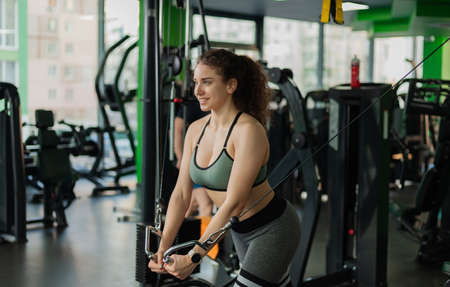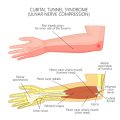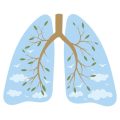Understanding Balance Challenges in Older Adults
As we age, maintaining balance becomes increasingly challenging, often resulting in a higher risk of falls and related injuries. In the UK, statistics from the Office for National Statistics reveal that one in three adults aged 65 and over experiences at least one fall each year. These incidents are not just numbers—they translate to thousands of hospital admissions, disruptions to independent living, and increased pressure on families and local health services. The decline in balance is usually attributed to a combination of factors: muscle weakness, reduced flexibility, changes in vision and hearing, and slower reflexes. Many older adults also live with long-term conditions such as arthritis or diabetes, which further complicate their ability to stay steady on their feet.
In my own experience volunteering at a community centre in Manchester, I’ve seen how quickly a seemingly minor stumble can shake someone’s confidence. For instance, Mrs. Patel, an active member of our weekly walking group, stopped attending after a small trip on her front doorstep led to a fractured wrist. She confided that it wasn’t just the injury but the lingering fear of falling again that kept her indoors. This loss of confidence is common and can trigger a downward spiral into social isolation and physical inactivity—both of which worsen overall health outcomes.
Understanding these challenges is the first step towards developing personalised balance training programmes that genuinely meet the needs of ageing populations across the UK. By appreciating both the physical causes and the emotional impact of declining balance, we can begin crafting solutions rooted in real-life situations and backed by national evidence.
2. Assessing Individual Needs and Abilities
Before embarking on any balance training programme for older adults, it’s crucial to understand each person’s unique starting point. A personalised approach starts with a thorough assessment of current balance levels and mobility, ensuring the plan is both safe and effective. Fortunately, within the UK, there are several practical tools and methods available via the NHS or at local physiotherapy clinics.
Common Assessment Tools Used in the UK
The following table outlines accessible assessments widely used by healthcare professionals to evaluate balance and mobility in ageing populations:
| Assessment Tool | Description | Where Accessible |
|---|---|---|
| Berg Balance Scale (BBS) | A 14-item scale measuring static and dynamic balance abilities through everyday tasks. | NHS clinics, community physiotherapists |
| Timed Up and Go (TUG) Test | Measures the time it takes to stand up, walk three metres, turn, return, and sit down. | GP surgeries, NHS outpatient settings |
| 30-Second Chair Stand Test | Assesses lower limb strength by counting how many times an individual can stand from a seated position in 30 seconds. | Local physiotherapy clinics, community centres |
| Falls Risk Assessment Tool (FRAT) | Screens for factors that may increase fall risk, including medication review and vision check. | NHS falls prevention teams, home visits |
| Functional Reach Test | Assesses stability by measuring how far a person can reach forward beyond arm’s length while standing. | Physiotherapy departments, some GP practices |
Tailoring Assessments to Individual Needs
The assessment process should always consider an individual’s health history, confidence level, and personal goals. For instance, someone living independently might benefit from more challenging dynamic balance tasks, while another with limited mobility may require focus on seated exercises. Open communication between the older adult and their healthcare provider is essential — even subtle feedback like feeling unsteady when turning or getting out of bed can guide the choice of assessment tools and inform next steps.
The Value of Regular Reassessment
It’s important to remember that abilities may change over time due to health status or increased activity levels. Building in periodic reassessment using the same tools helps track progress, adapt programmes accordingly, and keeps motivation high. Most NHS services encourage collaborative goal-setting so that every step forward is meaningful for the individual.

3. Key Principles for Personalised Balance Training
When it comes to developing personalised balance training programmes for ageing populations, the cornerstone is individualisation. In the UK, physiotherapists often start with a thorough assessment—looking at mobility, strength, previous injuries, and confidence levels. This allows us to set realistic goals and craft tailored interventions that suit each person’s lifestyle and preferences.
Evidence-Based Strategies
One effective approach is to blend static and dynamic exercises. For example, tandem stance or single-leg standing can be introduced early, progressing to walking along lines or obstacle navigation as confidence builds. Research from the NHS and leading universities supports these graduated routines for improving proprioception and reducing fall risk. Importantly, frequency matters: short, regular sessions (10–15 minutes daily) yield better results than sporadic longer workouts.
Incorporating Real-Life Scenarios
UK physiotherapists often advocate for functional exercises that mirror daily activities—such as rising from a chair without using hands or stepping over door thresholds. These tasks not only build strength but also enhance practical balance control, crucial for independent living.
The Value of Progression and Variety
A key tip from experienced practitioners is to keep things varied and progressive. Introducing challenges like eyes-closed balancing or dual-tasking (for instance, counting backwards while walking) keeps clients engaged and stimulates adaptive improvements. Regularly reviewing progress ensures exercises remain challenging yet achievable.
Cultural Sensitivity in Programme Design
It’s important to respect cultural backgrounds and individual interests—whether that means incorporating gentle Tai Chi classes in a community centre or recommending ballroom dancing at a local social club. Personal enjoyment is a powerful motivator for sticking with a programme.
Ultimately, successful balance training hinges on blending clinical expertise with compassion and creativity. By grounding our approach in both science and lived experience from across the UK’s diverse communities, we empower older adults to regain confidence and independence safely.
4. Designing Safe and Sustainable Programmes
When it comes to supporting older adults in building better balance, the cornerstone of success is a programme that’s both safe and sustainable. In the UK, this means weaving together the best of British safety guidelines with practical, everyday wisdom. Whether routines are carried out at home or in community centres, careful planning ensures that participants can stick with their programme and reduce the risk of injury. Here’s a step-by-step approach to creating routines that truly work for our ageing population.
Step 1: Start with an Individual Assessment
Every person has unique needs—mobility levels, medical history, living environment, and confidence all come into play. Begin with a thorough assessment, ideally conducted by a physiotherapist or qualified exercise professional, to identify strengths and areas for improvement. This initial evaluation forms the bedrock of a personalised plan.
Step 2: Select Appropriate Exercises
Choose movements that match individual abilities and daily life demands. In Britain, common recommendations include simple chair-based exercises, standing leg lifts using kitchen worktops for support, or gentle Tai Chi. The goal is to build up gradually—never too much, too soon.
| Exercise Type | Example | Where to Perform | Safety Tip |
|---|---|---|---|
| Static Balance | Standing on one leg | Next to sturdy furniture | Hold onto support if needed |
| Dynamic Balance | Tandem walking (heel-to-toe) | Clear hallway or garden path | Remove trip hazards first |
| Strengthening | Sit-to-stand from chair | Lounge or dining room chair | Ensure chair is stable and won’t slide |
| Flexibility | Ankle circles | Sitting down safely | Avoid over-stretching joints |
Step 3: Prioritise Safety at Every Stage
Applying British safety guidelines isn’t just box-ticking—it’s about peace of mind for participants and their families. Always advise wearing suitable footwear (sturdy slippers or shoes), keeping floors clear of clutter, and having good lighting in exercise areas. If using equipment like resistance bands or small weights, check they’re in good condition before each session.
The Value of Everyday Wisdom
No amount of professional guidance replaces lived experience. Encourage older adults to listen to their bodies and speak up if they feel dizzy or unwell. Remind them: there’s no rush—consistency beats intensity every time.
Supporting Adherence Through Routine and Community Spirit
Sustainability often hinges on routine and social connection. Set regular times for exercise—perhaps after breakfast or before tea—and consider group sessions at local community centres for motivation and camaraderie. In true British fashion, finishing with a cuppa can make all the difference!
This combination of evidence-based practice and local know-how empowers ageing individuals to embrace balance training as a long-term lifestyle habit, not just a short-term fix.
5. Motivating and Empowering Older Adults
Maintaining motivation can be one of the greatest challenges for older adults engaged in personalised balance training programmes. A key part of success is ensuring that individuals feel supported, valued, and connected throughout their journey. Social support plays a vital role in building ongoing participation and confidence. Whether its encouragement from family members, neighbours, or fellow participants, having someone to share progress with makes a real difference.
The Value of Group Classes
Group classes tailored for the ageing population offer more than just physical benefits. They foster camaraderie and a sense of belonging, which are often overlooked yet crucial for mental wellbeing. Sharing achievements and setbacks within a group helps normalise the process and reduces feelings of isolation. In the UK, many local leisure centres and community halls run sessions specifically designed for older adults, blending exercises with social interaction over a cuppa afterwards – making it both effective and enjoyable.
Leveraging Local Volunteering Opportunities
Volunteering is another brilliant way to motivate and empower older adults. By getting involved as helpers or peer mentors within balance training initiatives, individuals can find renewed purpose and pride. This not only builds confidence but also strengthens local networks. British charities like Age UK frequently seek volunteers to assist with activity sessions, helping others whilst keeping themselves active and engaged.
Building Confidence Through Positive Reinforcement
Finally, offering regular feedback and celebrating milestones – however small – is essential. Recognising improvement helps reinforce self-belief, encouraging participants to push through plateaus. For trainers and programme coordinators, adopting a warm, inclusive approach rooted in genuine care goes a long way towards empowering older adults to take ownership of their health and wellbeing.
6. Measuring Progress and Adapting Programmes
Ensuring that balance training programmes for ageing populations are both effective and responsive to individual needs means regularly measuring progress and being ready to adapt exercises as required. In the UK, straightforward monitoring strategies are commonly used by physiotherapists, occupational therapists, and other healthcare professionals to track improvements safely and efficiently.
Using Standardised Assessment Tools
A good starting point is to use well-recognised assessment tools such as the Timed Up and Go (TUG) test, the Berg Balance Scale, or the Functional Reach Test. These simple tests can be performed in community settings, clinics, or even at home with minimal equipment. Regularly repeating these assessments—say, every 4–6 weeks—allows both the participant and their support team to see clear evidence of improvement or identify areas needing more attention.
Monitoring Day-to-Day Function
Beyond formal tests, it’s important to consider everyday function. Encourage participants to keep a balance diary where they note any near-falls, changes in confidence when walking outdoors (especially on uneven ground or wet pavements), or improvements in tasks like climbing stairs. This real-world feedback gives vital context to the numbers from formal assessments.
Adapting Exercises Based on Progress
If someone is finding exercises too easy—perhaps they can now stand on one leg for much longer or walk further without wobbling—it’s time to make things a bit more challenging. This could mean increasing duration, reducing hand support, or adding dual-task elements such as counting backwards while balancing. Conversely, if someone struggles or reports increased fear of falling, scaling back to simpler exercises or offering more support might be necessary. Always prioritise safety and confidence.
Collaborating with Healthcare Professionals
Regular check-ins with GPs, physiotherapists, or trained exercise instructors ensure that adaptations are evidence-based and tailored. In the UK, many community falls prevention teams provide advice on progression and safe adaptation of balance activities as part of their ongoing support for older adults.
Celebrating Milestones
Finally, acknowledge achievements—no matter how small. Whether it’s walking confidently to the local shop or mastering a new exercise variation, celebrating progress keeps motivation high and reinforces positive habits. By combining structured assessments with personal reflections and professional guidance, balance training programmes become dynamic tools that evolve with each individual’s journey towards greater independence.


